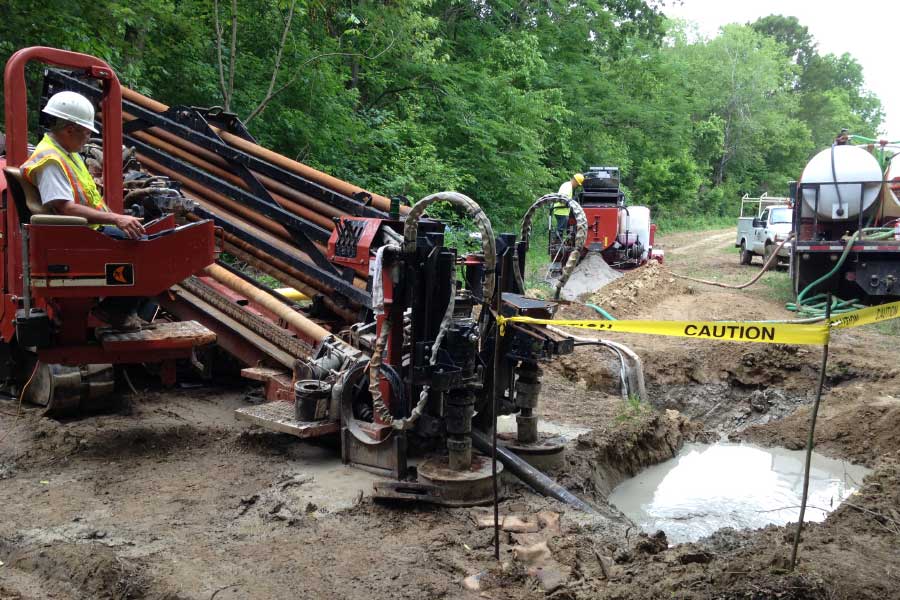
Horizontal Directional Drilling (HDD) is the definitive trenchless solution for modern utility installation, providing a robust, precise, and environmentally conscious alternative to traditional open-cut methods. This advanced technique is now routinely deployed across the United Kingdom, proving indispensable for installing and repairing pipes and cables in environments ranging from densely populated urban areas to sensitive rural landscapes. By eliminating the need for extensive trenches, HDD is highly efficient in terms of both time and cost, delivering essential infrastructure projects with minimal societal impact.
The Operational Process and Guidance Systems
The fundamental process involves drilling a pilot bore along a pre-determined, subterranean path, which is then widened to accommodate the product pipe or cable. This operation is entirely controlled from the surface, allowing specialist teams to execute full turnkey packages with exceptional precision. The capacity of modern equipment is significant, supporting pipelines with diameters of up to 900mm and facilitating impressive single drill lengths reaching 1000 metres.
To ensure this high level of accuracy, especially in complex undertakings like deep, twinned, or intricate crossings, sophisticated wire-line guidance systems are utilised. These steering mechanisms enable the drill head to be expertly navigated, ensuring it can be guided over, under, or around any existing subterranean obstacles. This capability is key to preventing disruption or damage to established cables and utilities, a primary risk inherent in older excavation methods.
Overcoming Geological Challenges
The efficacy of directional drilling extends even to the most challenging geological formations. Where ground conditions dictate, rock drilling capabilities are seamlessly integrated into the process. This involves employing specialised technologies such as All Terrain systems, Mud Motors, and Pneumatic Air Hammer Systems to efficiently bore through hard rock. Furthermore, a full complement of support equipment is essential to sustain the operation, including various recycling, desampling, and centrifuge systems which manage drilling fluid and cuttings, ensuring a clean and continuous workflow. The successful execution of contracts, regardless of scale, relies on a highly trained workforce backed by a modern fleet of directional drilling rigs and this supporting apparatus.
Environmental and Logistical Benefits
A major benefit of the HDD approach is the significant reduction in disruption. As the work is conducted beneath the surface, the site area—and the resulting interference with roads and other forms of access—is greatly minimised. This streamlined logistical footprint is not only a benefit in bustling urban settings but is also crucial when operations must be carried out in environmentally sensitive areas.Prior to any drilling, experienced management teams conduct a thorough pre-planning exercise. This proactive step is aimed at identifying any subterranean features or utilities that need to be avoided, allowing the drill path to be planned meticulously. This seamless, economical, and environmentally friendly process is supported by other methodologies, such as trenching for wider channels and mole ploughing (which creates a narrow, temporary trench) for smaller diameter mains like fibre telecoms, water, and gas, offering a comprehensive suite of sub-surface installation options.